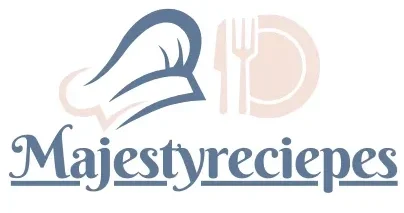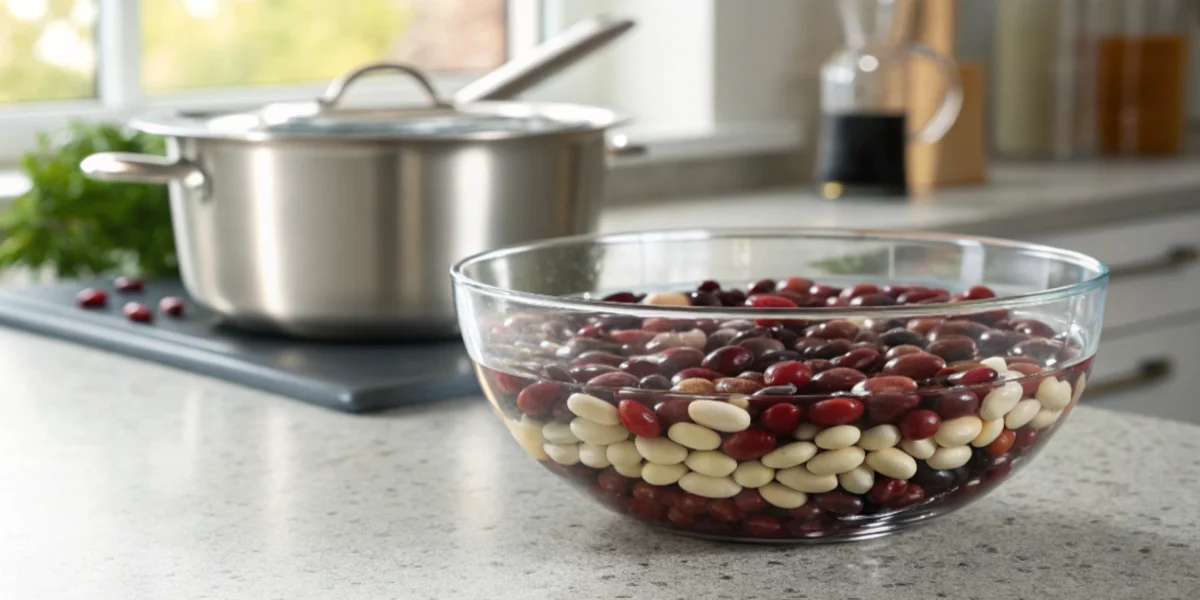Ever thought about Do all dried beans need to be soaked before cooking? Kitchen myths often confuse home cooks, especially when it comes to bean soaking techniques. Not all dried beans need the same preparation, and understanding their unique traits can transform your cooking.
Cooking beans might seem simple, but the soaking question is far more complex. Different beans have their own needs, which influence their texture, cooking time, and digestibility. Learning the best approaches, from traditional soaking to quick-soaked beans, can make a significant difference.
In this detailed guide, we’ll explore the science of soaking dried beans. We’ll show you which beans require soaking, highlight the best prepping dried beans practices, and share expert tips. Whether you’re a seasoned chef or a curious home cook, you’ll gain a complete understanding of soaking dried beans.
Table of Contents
Key Takeaways
- Not all beans require the same soaking method
- Soaking can reduce cooking time and improve digestibility
- Some bean varieties cook perfectly without pre-soaking
- Proper bean preparation enhances nutritional value
- Cooking techniques vary based on bean type
Understanding the Science Behind Bean Soaking
Cooking legumes is more than just tossing beans into a pot. The science behind bean soaking techniques uncovers a complex process that transforms dried beans into nutrient-rich foods. By exploring prepping dried beans, you can better understand why soaking is a crucial step in enhancing their nutritional value.
Do all dried beans need to be soaked before cooking? Not necessarily, but soaking triggers fascinating molecular shifts. When dried beans absorb water, their structure softens, proteins break down, and nutrients become more accessible. These changes demonstrate the importance of using methods like quick-soaked beans to optimize both texture and digestibility.To explore this concept further, check out What Happens If You Don’t Drain Kidney Beans for Chili?. This article dives into the effects of preparing beans without proper draining.
How Water Absorption Affects Bean Structure
Water is key in softening bean cells. When beans soak, water molecules enter the bean’s hard outer layer. This leads to several important changes:
- Cell walls become more open
- Protein structures start to break down
- Starches start to gelatinize
The Role of Enzymes in Bean Softening
Enzymes are tiny proteins that help speed up chemical reactions in cooking. When beans soak, these enzymes get to work. They help:
- Break down complex carbs
- Reduce harmful compounds
- Make beans easier to digest
Chemical Changes During the Soaking Process
“Soaking isn’t just about softening beans—it’s about transforming them at a molecular level.” – Culinary Science Expert
Soaking beans triggers amazing chemical reactions. Proteins unfold, starches become easier to access, and minerals change. This makes your beans not only softer but also more nutritious.
By using these soaking techniques, you’re not just cooking a meal. You’re conducting a complex science experiment in your kitchen.
Do All Dried Beans Need to Be Soaked Before Cooking?
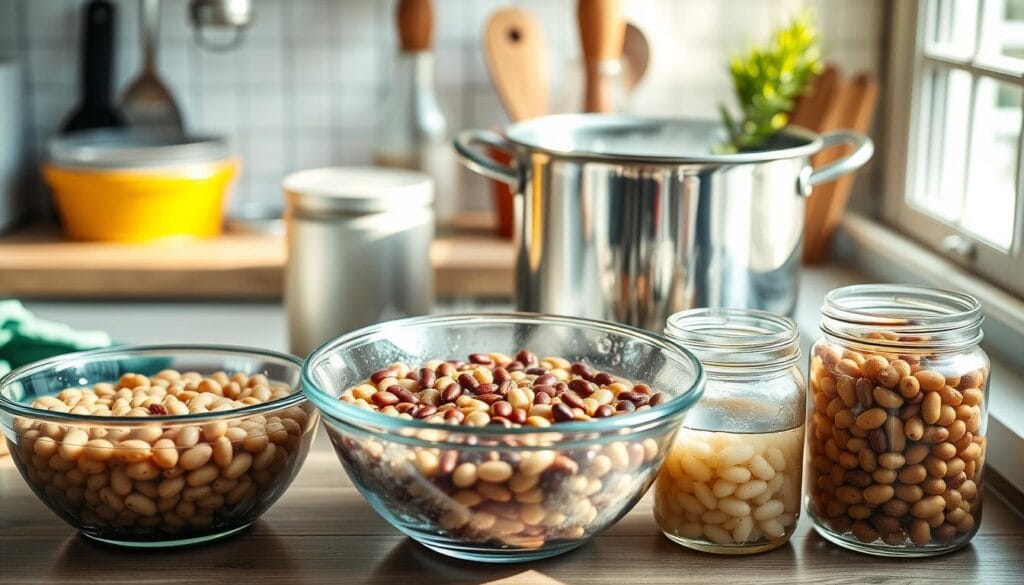
Many people wonder if all dried beans need soaking before cooking. The answer varies by bean type. Knowing how to cook different beans can save time and make your dishes better.
Beans come in many varieties, each with its own cooking needs. Some beans are hard and need soaking, while others cook quickly with little prep.
- Large, tough beans typically require soaking
- Small beans might cook quickly without pre-soaking
- Older beans often need longer preparation time
Choosing the right cooking method depends on the bean type, age, and texture you want. While not all dried beans need soaking, most benefit from some water prep.
| Bean Type | Soaking Recommendation | Cooking Time |
|---|---|---|
| Kidney Beans | Always soak | 60-90 minutes |
| Black Beans | Recommended | 45-60 minutes |
| Lentils | Optional | 20-30 minutes |
For more tips on bean preparation, read Chili Recipe With Dry Beans, which highlights how to cook flavorful dishes with properly soaked legumes.
Pro tip: Fresh beans generally require less soaking time compared to older, drier beans.
Traditional Bean Soaking Methods and Their Benefits
Preparing dried beans requires skill and understanding the best bean soaking techniques. Choosing the right method not only enhances your cooking but also improves the taste and digestibility of beans. Whether you’re prepping dried beans for a hearty stew or a simple side dish, the soaking process plays a key role.
Both chefs and home cooks rely on various overnight soaking methods to unlock the full potential of beans. These techniques not only make beans taste better and cook faster but also break down proteins, aiding digestion. If you’ve ever wondered, Do all dried beans need to be soaked before cooking?, exploring options like quick-soaked beans can provide efficient and effective alternatives.
Overnight Cold Water Soaking
Cold water soaking is the oldest bean soaking method. Here’s how to do it right:
- Select clean, unbroken dried beans
- Rinse beans thoroughly
- Cover beans with cold water (3 inches above bean level)
- Let sit at room temperature for 8-12 hours
- Drain and rinse before cooking
Hot Soak Technique
The hot soak method makes bean preparation faster and can cut cooking time. Here’s how to do it:
- Boil beans for 2-3 minutes
- Remove from heat
- Let beans sit covered for 1-4 hours
- Drain and rinse before cooking
Salt Soaking Benefits
Adding salt during soaking is one of the most effective bean soaking techniques to improve both taste and texture. A pinch of salt not only boosts flavor but also softens the bean skins, making them more tender and enjoyable to eat.
When prepping dried beans, small adjustments like this can make a big difference. While exploring the question, Do all dried beans need to be soaked before cooking?, incorporating salt into soaking practices can elevate your dishes, whether you choose traditional methods or opt for quick-soaked beans.
“Proper soaking transforms dried beans from tough legumes into tender, delicious meals.” – Culinary Expert
Learning these soaking techniques will make your bean dishes tastier and easier to digest every time.
Types of Beans That Always Require Soaking
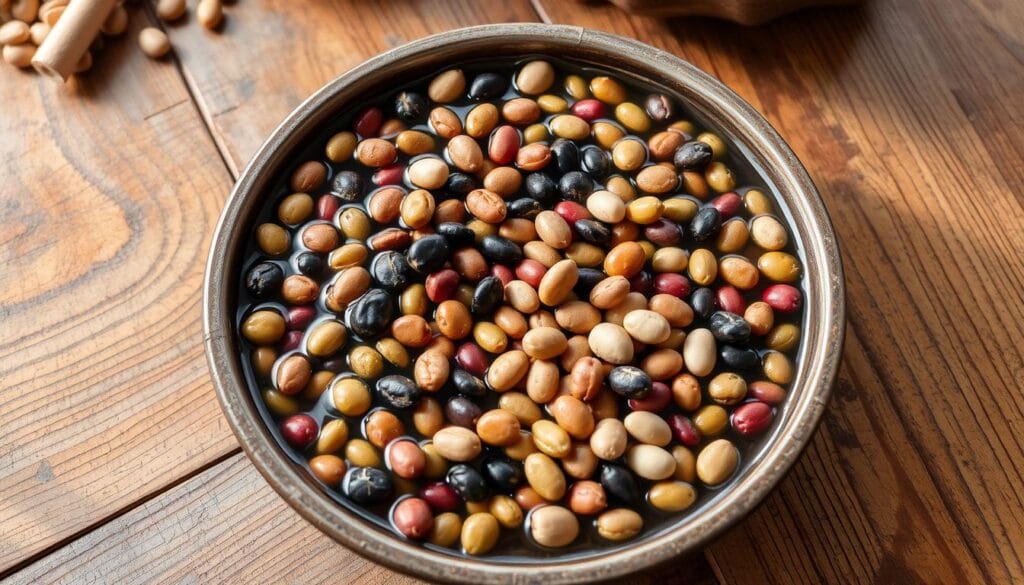
Not all dried beans are the same. Some need extra care to cook right. Knowing which beans to soak can make your cooking better.
Big, dense beans need soaking the most. They have thick skins and complex insides. Soaking helps them cook better.
- Kidney Beans: These deep red beans have a tough skin that needs soaking
- Pinto Beans: They get creamy when cooked right
- Navy Beans: They soak up a lot of water
- Great Northern Beans: They’re big and take a long time to cook
“Proper soaking isn’t just about softening beans, it’s about unlocking their nutritional value.” – Culinary Nutrition Expert
Soaking big beans takes 8-12 hours. It makes them easier to digest and cooks them faster.
Look for these signs to know if a bean needs soaking:
- Thick, robust skin
- Large physical size
- High starch content
- Longer typical cooking duration
Knowing which beans to soak improves your cooking. It makes your meals tastier and easier to digest.
Beans You Can Cook Without Soaking
Not all dried beans need soaking. Some are great for no-soak recipes, saving you time. Knowing which beans can cook directly changes your cooking routine.
Some beans cook faster and skip soaking. Let’s look at the beans that make cooking easier:
Small Bean Varieties
Smaller beans are perfect for no-soak recipes. They cook fast and soak up water quickly:
- Black-eyed peas
- Adzuki beans
- Navy beans
- Pink beans
Split Pea and Lentil Exceptions
Split peas and lentils cook fast. They break down quickly and need little prep time. They’re great for quick meals.
“Speed doesn’t compromise nutrition – split peas and lentils prove you can have quick and healthy meals!” – Culinary Expert
Modern Bean Varieties
New bean varieties cook faster. They’re bred for quicker cooking and better digestion. They’re ideal for fast meals.
Even without soaking, rinse these beans well. Check for debris before cooking. Start your quick bean cooking journey now!
Quick-Soak Methods for Time-Pressed Cooks
Forgot to soak your beans overnight? Don’t worry. Quick-soaked beans can save the day. They offer fast bean rehydration tips that don’t sacrifice quality. The right method can turn dry beans into tender, tasty legumes in a short time.
- Boil-and-Rest Method: Bring beans to a rapid boil for 2-3 minutes, then remove from heat
- Microwave Acceleration: Use high power to jumpstart bean rehydration
- Hot Water Soak: Cover beans with boiling water for faster absorption
The boil-and-rest technique works well. Start by boiling your dried beans for 2-3 minutes, then stop the heat and let them sit, covered, for one hour. This method cuts down soaking time and helps break down sugars that can upset your stomach.
| Method | Time Required | Effectiveness |
|---|---|---|
| Overnight Soak | 8-12 hours | High |
| Boil-and-Rest | 1-2 hours | Very High |
| Microwave Soak | 30-45 minutes | Moderate |
“Speed doesn’t mean sacrificing quality – it’s about smart preparation.” – Culinary Expert
Quick-soaked beans might need a bit longer to cook than soaked ones. Adjust your recipe to get perfectly cooked beans in less time.
How Soaking Affects Nutritional Value and Digestibility
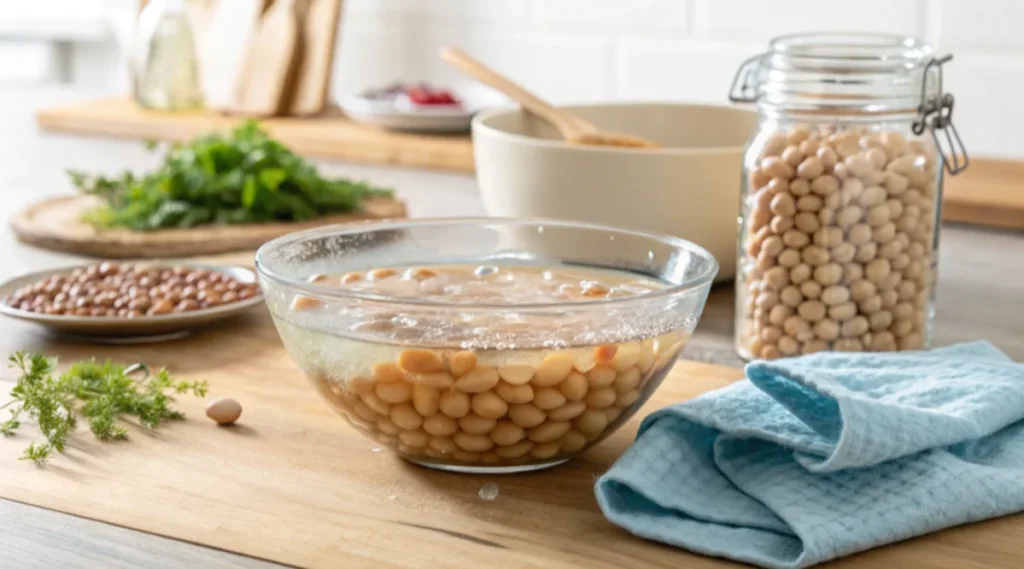
Soaking beans is key when cooking legumes. It’s not just about making them soft. It’s a step that boosts their nutritional value and makes them easier to digest.
Reducing Anti-Nutrients Through Soaking
Dried beans have anti-nutrients like phytic acid. This can stop your body from getting important minerals. Soaking beans can cut down these anti-nutrients by half. It breaks down complex molecules, making minerals easier for your body to use.
- Reduces phytic acid by up to 50%
- Minimizes enzyme inhibitors
- Enhances mineral bioavailability
Impact on Mineral Absorption
Soaking beans is vital for better mineral absorption. It prepares beans for better nutrient uptake. This method releases minerals like iron, zinc, and magnesium, making them easier for your body to digest and use.
| Mineral | Absorption Before Soaking | Absorption After Soaking |
|---|---|---|
| Iron | 20-30% | 40-50% |
| Zinc | 15-25% | 35-45% |
| Magnesium | 25-35% | 45-55% |
Digestive Benefits of Proper Soaking
Soaking beans is good for your digestive system. It breaks down sugars that cause gas and bloating. Proper soaking can reduce digestive discomfort and make beans a more comfortable addition to your diet.
“Soaking is not just a cooking technique, it’s a nutritional strategy.” – Culinary Nutrition Expert
Common Bean Soaking Mistakes to Avoid
Preparing dried beans might seem easy, but many people make big mistakes. These errors can ruin the taste and texture of your beans. Knowing these mistakes can help you cook beans that are tender and tasty every time.
Temperature is key when soaking beans. Many mistakenly use hot water, which can stop beans from getting soft. Instead, use cold or room temperature water for the best results.
- Avoid using hard water, which can prevent beans from softening
- Never add salt during the initial soaking process
- Check beans periodically during soaking to ensure proper hydration
Storing soaked beans is also important. Improperly stored soaked beans can quickly develop bacteria. Always keep soaked beans in the fridge and use them within 24 hours for the best taste and safety.
“The secret to perfect beans is patience and attention to detail.” – Culinary Expert
Here’s a quick guide to avoid common bean soaking mistakes:
| Mistake | Correct Approach |
|---|---|
| Using hot water | Use cold or room temperature water |
| Soaking too long | Soak 8-12 hours maximum |
| Improper storage | Refrigerate and use within 24 hours |
By avoiding these common mistakes, you’ll improve your bean preparation skills. You’ll enjoy perfectly cooked legumes every time.
Alternative Methods to Traditional Soaking
Modern bean cooking methods have changed how we make these nutritious legumes. You don’t always need to soak beans. No-soak bean recipes can save you time and effort in the kitchen.
Exploring new bean cooking methods can improve your cooking. Whether you’re in a hurry or want easier ways to cook, these alternatives will change your approach to bean cooking.
Pressure Cooker Techniques
Pressure cookers are a big help for no-soak bean recipes. They cook beans fast without losing flavor or texture. Here are some benefits:
- Cuts cooking time by up to 70%
- Eliminates the need for overnight soaking
- Preserves nutritional value
- Creates tender beans in minutes
Pressure cookers are particularly effective, as described in Cooking Frozen Lobster Tails – The Best Method, showcasing how technology can simplify even complex recipes.
Slow Cooker Adaptations
Slow cookers are another great option for cooking beans. They let you make tasty bean dishes without soaking.
| Bean Type | Cooking Time | Liquid Ratio |
|---|---|---|
| Black Beans | 4-5 hours | 3 cups water per 1 cup beans |
| Pinto Beans | 5-6 hours | 3.5 cups water per 1 cup beans |
| Kidney Beans | 5-6 hours | 3 cups water per 1 cup beans |
No-Soak Cooking Methods
Some methods let you skip soaking beans. Quick-cooking techniques make cooking beans faster and easier.
“The key to successful no-soak bean recipes is understanding each bean variety’s unique characteristics.” – Culinary Expert
- Use fresh or recently purchased dried beans
- Add salt after cooking to prevent tough skins
- Maintain consistent liquid levels during cooking
- Adjust cooking times based on bean type
These alternative bean cooking methods offer flexible options for home cooks. They provide convenience without losing flavor or nutrition.
FAQ
Do all dried beans really need to be soaked before cooking?
Not all dried beans need soaking. Larger beans usually benefit from soaking, but small ones like lentils and split peas can cook directly. The soaking time depends on the bean type and your cooking method.
How long should I typically soak dried beans?
Soak most beans for 8-12 hours in cold water for an overnight soak. For a hot soak, soak for 2-4 hours. Make sure the beans are fully covered and have room to expand.
What are the benefits of soaking beans?
Soaking beans has many benefits. It shortens cooking time, breaks down sugars for better digestion, and boosts nutrient absorption. It also makes beans cook more evenly and reduces anti-nutrients like phytic acid.
Can I skip soaking if I’m in a hurry?
Yes! Quick alternatives include using a pressure cooker or the quick-soak method. Bring beans to a boil for 2-3 minutes, then rest for an hour. Small beans like lentils and split peas can cook without soaking.
Does salt affect bean soaking?
Adding salt during soaking can improve bean texture and flavor. Salt softens bean skins and shortens cooking time. But, too much salt can toughen beans at first.
Are there any beans that should always be soaked?
Large, dense beans like kidney beans and black beans benefit most from soaking. They are larger and denser, needing longer cooking times to become tender.
How do I know if my soaked beans have gone bad?
Check for fermentation signs, unusual odors, or mold. Soaked beans should smell fresh and have a consistent color. If the water is cloudy or smells sour, discard the beans and start again.
Can I soak beans at room temperature?
Soak beans in the refrigerator, not at room temperature, in warm climates. Room temperature soaking can lead to bacterial growth and spoilage. If you soak at room temperature, limit it to 4-6 hours and keep it cool.
Conclusion
Now you know not all dried beans need soaking before cooking. You’ve seen many ways to cook beans, each suited for different types and tastes. Whether you soak or not, you’re ready for any bean challenge.
Do all dried beans need soaking? It’s not a simple yes or no. Small beans like lentils don’t need soaking, but bigger beans do. Your kitchen tests will show the best way to cook beans for you.
Being flexible is important when cooking beans. Some recipes need soaking, while others don’t. Knowing the science behind cooking beans boosts your confidence. Remember, practice is key, and each bean type might need a special touch.
Your bean cooking adventure is just starting. Keep trying new methods and enjoying the world of legumes. With your knowledge, you can make tasty, healthy meals that will wow everyone.
